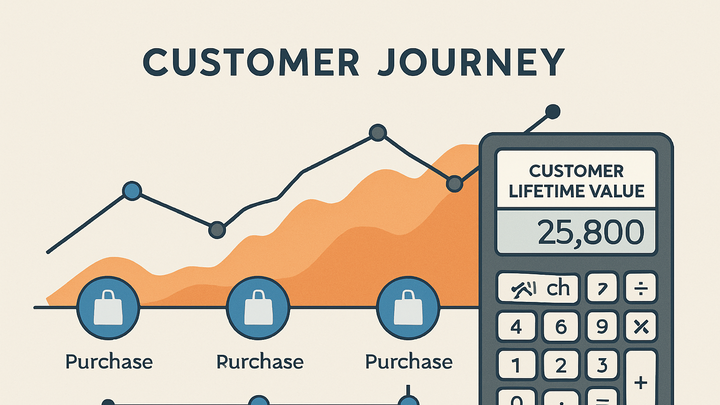Published on 2025-06-22T07:22:39Z
What is Customer Lifetime Value (CLV)? Analytics Definition & Examples
Customer Lifetime Value (CLV) is a metric that estimates the total revenue a business can expect from a single customer over the entire duration of their relationship. It helps companies identify high-value segments, optimize marketing spend, and drive sustainable growth. CLV combines historical purchase data—like average order value and purchase frequency—with projected future interactions to forecast profitability. In analytics platforms such as Google Analytics 4 (GA4) and cookie-free solutions like PlainSignal, businesses can track and predict CLV to tailor acquisition strategies, retention campaigns, and product roadmaps. Understanding and optimizing CLV is essential for maximizing return on investment and achieving long-term customer loyalty.
Customer lifetime value (clv)
CLV estimates total revenue a customer generates over their lifespan to guide marketing, retention, and growth strategies.
Understanding Customer Lifetime Value
In this section, we define CLV and discuss why it’s a critical metric for businesses aiming to measure long-term customer profitability.
-
Definition
Customer Lifetime Value (CLV) is the total revenue a business expects to earn from a customer over the whole period of their relationship. It’s calculated based on past purchase behavior and projected future interactions.
-
Importance of clv
CLV helps businesses identify their most valuable customers, allocate marketing spend efficiently, and make strategic decisions that foster loyalty and revenue growth.
Calculating CLV
This section covers common formulas and models used to calculate CLV, from simple historic approaches to advanced predictive analytics.
-
Basic clv formula
Calculate CLV using: Average Order Value × Purchase Frequency × Average Customer Lifespan. This gives a quick estimate of customer value.
-
Predictive clv models
Use advanced statistical methods and machine learning to forecast future revenue based on past behavior, churn rates, and retention metrics.
-
Cohort analysis
Segment customers by acquisition date to observe spending patterns over time and predict future value.
-
Customer churn rate
Incorporate churn probability to adjust revenue forecasts and improve prediction accuracy.
-
Tracking CLV in Analytics Platforms
Learn how to implement CLV tracking in popular analytics tools like GA4 and PlainSignal to gather the necessary data for accurate measurement.
-
Google analytics 4 (GA4)
In GA4, use e-commerce events (purchase, refund) with user-scoped metrics. Enable User-ID reporting to tie events to individual users and view the built-in Lifetime Value report under ‘Advertising’ > ‘Lifetime Value’.
-
PlainSignal integration
With PlainSignal’s cookie-free analytics, you can track CLV by sending revenue-related events and custom properties. Embed the tracking snippet on your site:
-
Tracking snippet
<link rel="preconnect" href="//eu.plainsignal.com/" crossorigin /> <script defer data-do="yourwebsitedomain.com" data-id="0GQV1xmtzQQ" data-api="//eu.plainsignal.com" src="//cdn.plainsignal.com/plainsignal-min.js"></script>
-
Use Cases and Best Practices
Explore how businesses leverage CLV insights to drive marketing strategies, personalize experiences, and optimize acquisition and retention efforts.
-
Segmentation and targeting
Group customers by CLV tiers to tailor campaigns—upselling high-value segments while nurturing lower-value groups.
-
Optimizing acquisition spend
Compare CLV to Customer Acquisition Cost (CAC) to ensure profitable growth and adjust bidding strategies and channel investments accordingly.
-
Retention strategies
Use CLV predictions to identify at-risk customers and deploy personalized retention offers, loyalty programs, or re-engagement campaigns.
